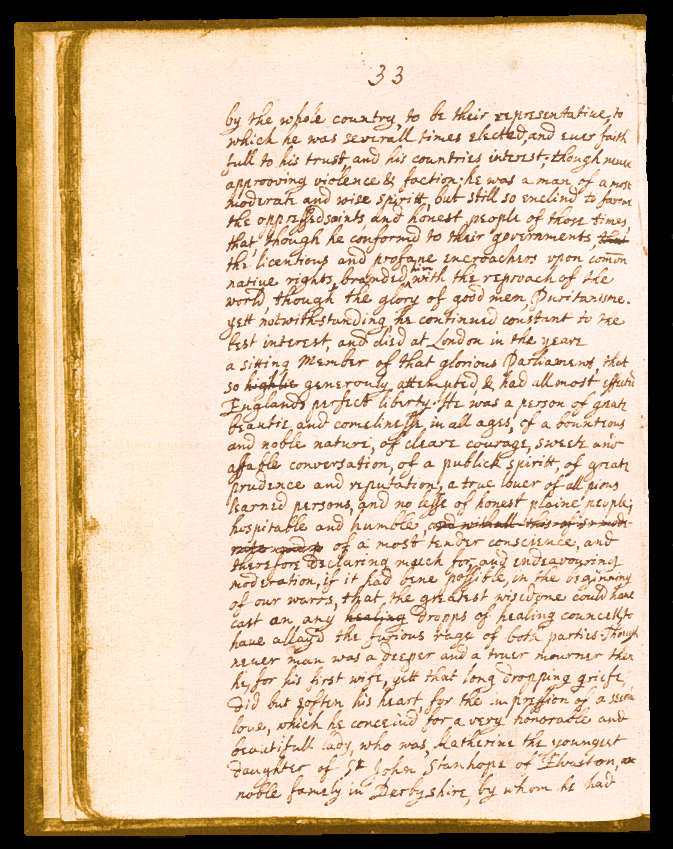
January 26, 2016, by Guest blogger
Emotive Objects at Nottingham Castle: Part 2
Richard Gaunt has had a busy few months at Nottingham Castle working as ‘Curator of Rebellion’. He has continued to help shape the historical content informing the new galleries by researching some of the emotive objects which it is hoped will prove particularly appealing to visitors. This is the second instalment in a series of blogs where Richard shares the results of that research, which show the diverse nature of ‘rebellion’ in the history of Nottingham – and its Castle – over the course of the past 500 years and more.
Lucy Hutchinson’s Memoirs
Lucy Hutchinson’s Memoirs of the Life of Colonel Hutchinson, Governor of Nottingham Castle and Town was first published in 1806. It was probably written in the decade separating the deaths of John (1664) and Lucy Hutchinson (1674), however appears not to have been intended for publication.
Lucy Hutchinson called her work ‘The Life of John Hutchinson of Owthorpe in the County of Nottingham Esquire’. The first thirty pages consist of two extended attempts by Lucy to describe her husband’s character to their children. Lucy’s work was designed as a private memorial to her husband, who was in charge of Nottingham Castle during the English Civil War. It was also a defence against many of the criticisms which were levelled against him in his lifetime by his many and varied enemies.
Lucy provides a detailed picture of the years 1642-8 and comments on social and political issues (including the origins of the term ‘Roundhead’), with her dedication to religion, family and her husband shining through the work. Interestingly, in spite of Lucy’s posthumous adoption as a ‘feminist,’ she was far from conforming to that ideal – for example, in describing herself as ‘a pale shadow’ of her husband.
Jeremiah Brandreth Execution Block
Jeremiah Brandreth, the ‘Nottingham Captain’, who led the ‘Pentrich Rebellion’ on 9-10 June 1817, was hanged outside Derby prison at about 12.35pm on 7 November 1817.
After hanging for more than half an hour, his body was taken down and laid on this bench or block at about 1.25pm. The cap which had covered his head was removed and the executioner, who had two axes, two knives and a basket, proceeded to remove Brandreth’s head from his body.
The axe did not complete the work, so an assistant completed the operation u
sing one of the knives. Brandreth’s head was then seized by the hair, held up, and showed to the audience, left, right and centre, with the repeated cry ‘Behold the head of the traitor Jeremiah Brandreth’.
His head and body were then placed in a coffin and buried at the bottom of an unmarked grave at St Werburgh’s churchyard, Derby. The execution block, which is built of very ordinary planks of wood, was authenticated as original by Derby museum staff in the 1970s. In 2017, to mark the bicentenary, I’ll be exploring Brandreth’s life and legacy, in a lecture to the Thoroton Society of Nottinghamshire.
No comments yet, fill out a comment to be the first


Leave a Reply